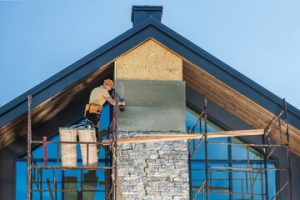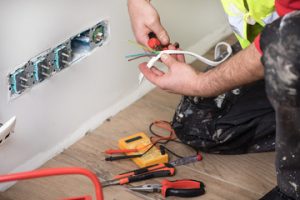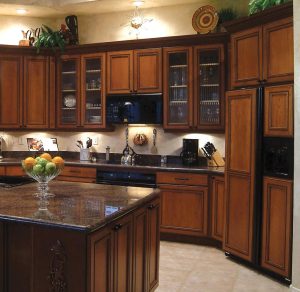Bathroom Remodel Lexington KY is an opportunity to upgrade not just the functionality of your home, but also its design and aesthetic. From tile to plumbing and electrical, there are a number of influencing factors that can add up.

Whether you’re updating for resale or your personal enjoyment, keep reading to learn the top tips for ensuring a successful Bathroom Remodel.
A bathroom remodel includes many big decisions and small details that affect the cost of your project. For example, if you want to replace your tub with a walk-in shower, the costs can range from $4,200 to $8,500 depending on materials and labor. Other options like heated flooring and a freestanding bathtub will also increase the price of your renovation. Adding or replacing fixtures can add another $1,000 to $3,000 or more, and upgrading to luxury upgrades is often more expensive than basic updates.
The biggest factor that affects bathroom remodel costs is the scope of changes required. Remodels often involve significant structural or functional updates, such as rerouting plumbing or altering the floor plan. These projects can add thousands to your remodeling budget and may require a permit to complete.
It’s important to consider your long-term plans for your home when deciding whether or not a remodel is worth the investment. If you’re considering selling in the near future, a renovation may be more beneficial as it will increase the appeal of your home and speed up the sales process. However, if you’re planning to stay in your home for years, a full bathroom remodel is an excellent way to make the space truly your own.
Materials
The materials you choose for your bathroom remodel affect both the style and functionality of the space. Whether you choose to go with sleek, modern finishes or warm, natural woods, the right materials will make your bathroom a comfortable and welcoming retreat that is easy to maintain and care for.
Durable surfaces that resist moisture and staining are essential in bathrooms, where the environment is humid and high-use. Consider durable glazed tile and composite countertops that offer a beautiful aesthetic without the need for frequent resealing. Non-porous materials like Corian are gaining popularity for their modern, seamless look and ease of maintenance. Concrete is another popular countertop material, appreciated for its industrial aesthetic and durability.
Decorative details, such as beadboard and shiplap walls, provide an opportunity to add personality to your bathroom. You can also opt for unique lighting fixtures and furniture to create a distinctive style. For added convenience and efficiency, integrate smart technology into your bathroom. Smart showers, faucets, and toilets reduce water consumption while allowing you to control them remotely or program them based on your schedule.
For a bathroom that is both beautiful and functional, carefully consider the layout of the room. A well-planned layout maximizes storage and provides a logical flow that enhances the user experience. By selecting high-quality materials and fixtures, you can create a luxurious retreat that will remain attractive over time, and increase your home’s resale value.
Design
A bathroom remodel involves more than just changing out fixtures and finishes. It requires reworking the layout of the room, including making sure plumbing and electrical connections are accessible and properly sized for your needs. It may also involve adding or moving walls to create more storage, accommodate a different sink location, or add a larger shower.
A well-designed layout is essential to creating a functional and visually appealing space. A minimalist bathroom, for example, can be made to feel open and spacious by removing bulky elements, installing large floor tiles with few grout lines, and using a neutral color scheme. A well-thought-out layout can also include ample storage and make it easy to navigate the room.
Wellness design is another popular trend that focuses on the mental, physical, and spiritual well-being of homeowners. This can be accomplished through the use of calming colors, natural materials, and features like built-in seating. Incorporating energy-efficient and water-saving fixtures can help save money over time.
A professional designer can be an invaluable resource in determining what changes will make the most impact on your space and budget. They can offer suggestions for ways to update your bathroom without breaking the bank. They can help you understand how your remodeling project will affect your home’s structure and plumbing, and provide details about the installation process that might not be obvious to a layperson. They can even suggest alternatives to costly upgrades, such as finding a comparable faucet that offers the same functionality at a lower cost.
Plumbing
Plumbing is the heart of your bathroom. It carries water to and from your fixtures, showers, and bathtubs, and waste from the toilet to a sewer line or septic tank.
During a remodel, you may need to replace or relocate your water supply lines, drain pipes, and electrical wiring. This is especially true if you are changing the layout of your bathroom. For example, if you’re replacing your tub with a shower, you’ll need to change out the old tub drain and move the shower plumbing.
The key to a successful bathroom remodeling project is planning well in advance. You’ll need to establish a budget, choose materials, and determine the timeline for your project. It’s also a good idea to create a contingency fund of 5-10% of your total budget to cover unforeseen expenses.
A bathroom renovation isn’t just about improving the appearance of your home, it’s also about increasing its value and functionality. Whether you’re looking for ways to update your space or prepare to sell your home, a bathroom remodel can help you get the most return on your investment. By following these tips, you can ensure a smooth and stress-free renovation that transforms your space into your dream bathroom.
Electrical
Modern bathrooms require a great deal of power for electric devices and fixtures. Installing new wiring during a bathroom remodel is an excellent opportunity to bring the electrical system up to date and bring it in line with current safety codes. It also ensures that everything will work properly, which can prevent costly surprises down the road.
It’s a good idea to address any plumbing issues while the walls are open, too. This includes replacing old or corroded pipes and fixing any leaks. This can save a lot of time and money down the road, especially if the issues are addressed sooner rather than later.
Any lighting or wall switches must be on a dedicated circuit that is GFCI protected. This is usually a 20-amp circuit. This is a requirement of code that protects against shock in wet areas. This is especially important if you have other rooms sharing the same circuits. The National Electrical Code (NEC) requires that a minimum of one GFCI-protected outlet be provided for every occupied bath in a house.
Lighting
The bathroom is an important room in your home, and the right design and fixtures can make it feel modern and stylish. You can make small changes, like adding a new mirror that has built-in lighting or updating the color scheme to give your bathroom a fresh look. Or, you can go big and remodel your entire bathroom for a completely different aesthetic. Whatever your project entails, it’s essential to work with a licensed and experienced contractor to ensure compliance with building codes and safety standards.
Beyond the visual enhancements, a bathroom remodel can enhance convenience and increase energy efficiency. Smart upgrades, like motion-sensor faucets and heated floors, can reduce electricity consumption and improve comfort. Upgrading to LED lights also cuts your energy costs and provides a higher-quality light that’s good for the environment. Using recycled materials is another savvy option, as it adds character and an environmental awareness to your bathroom. Other eco-friendly improvements include the use of low-VOC paints and the installation of a water-efficient toilet.





